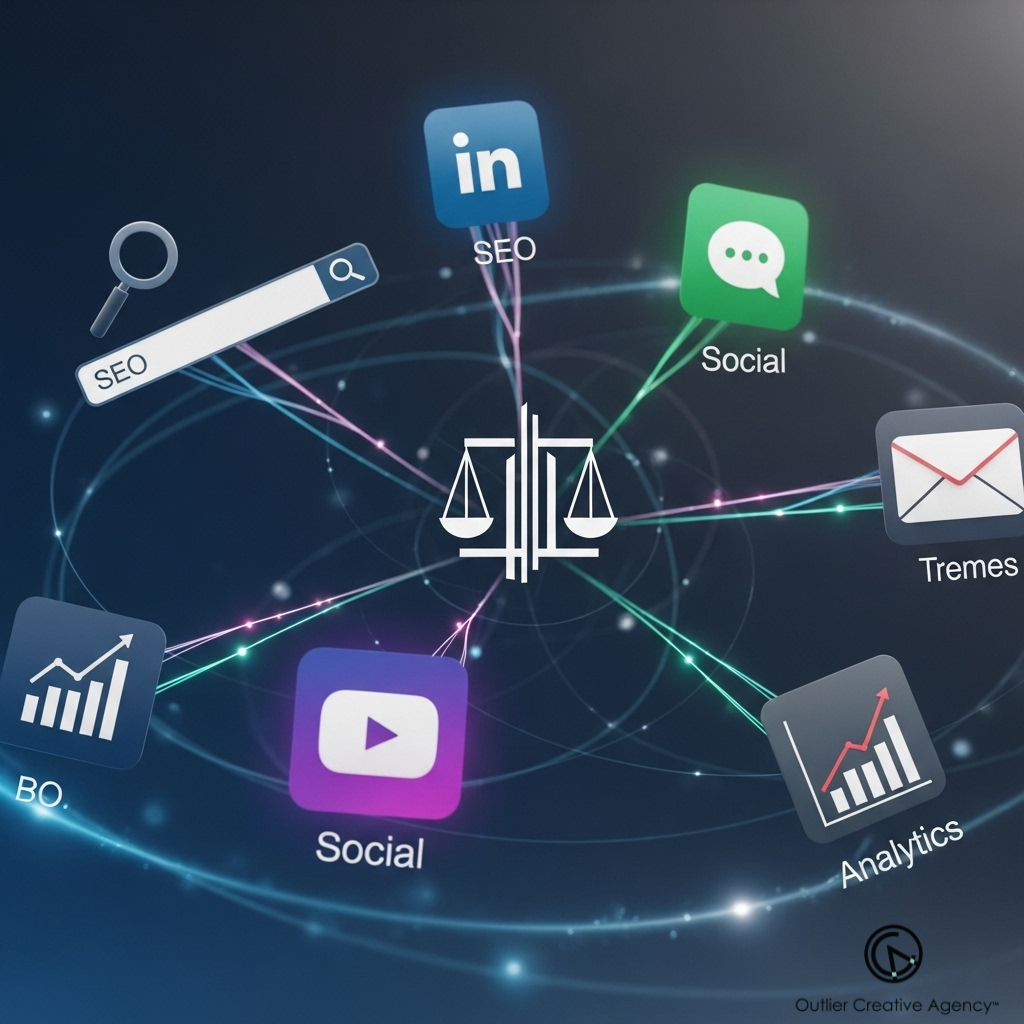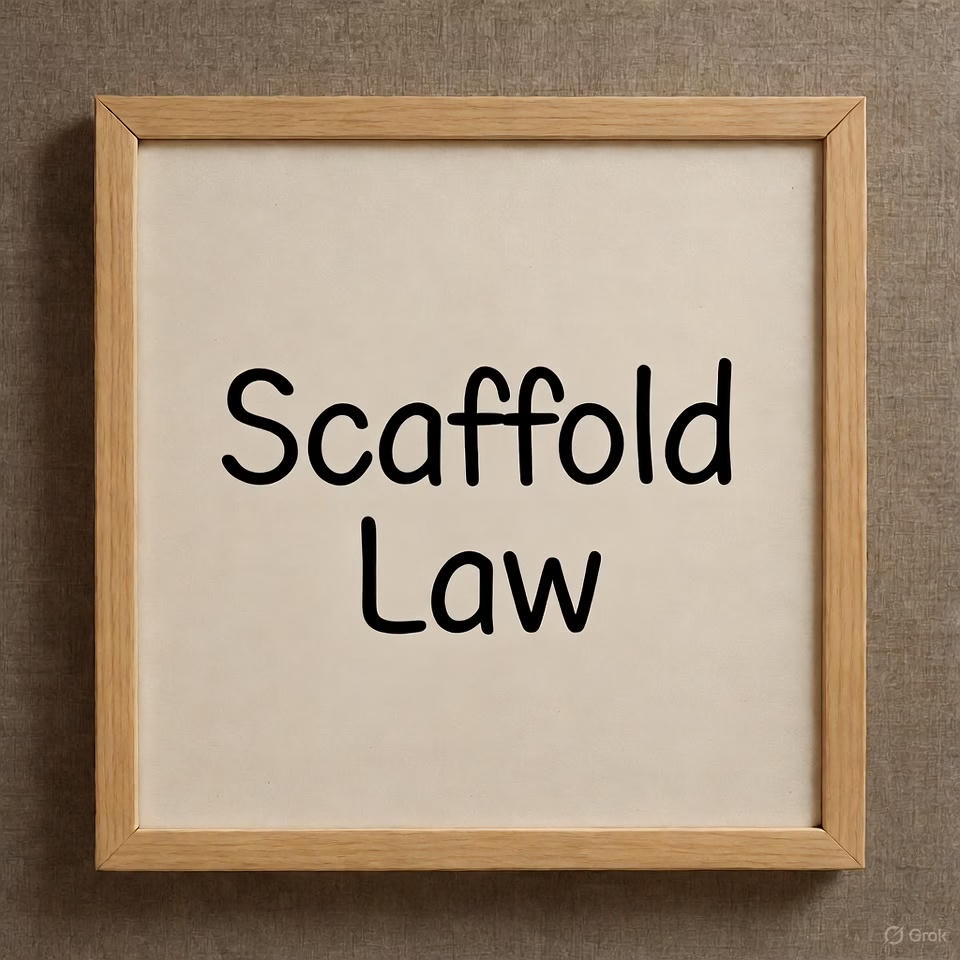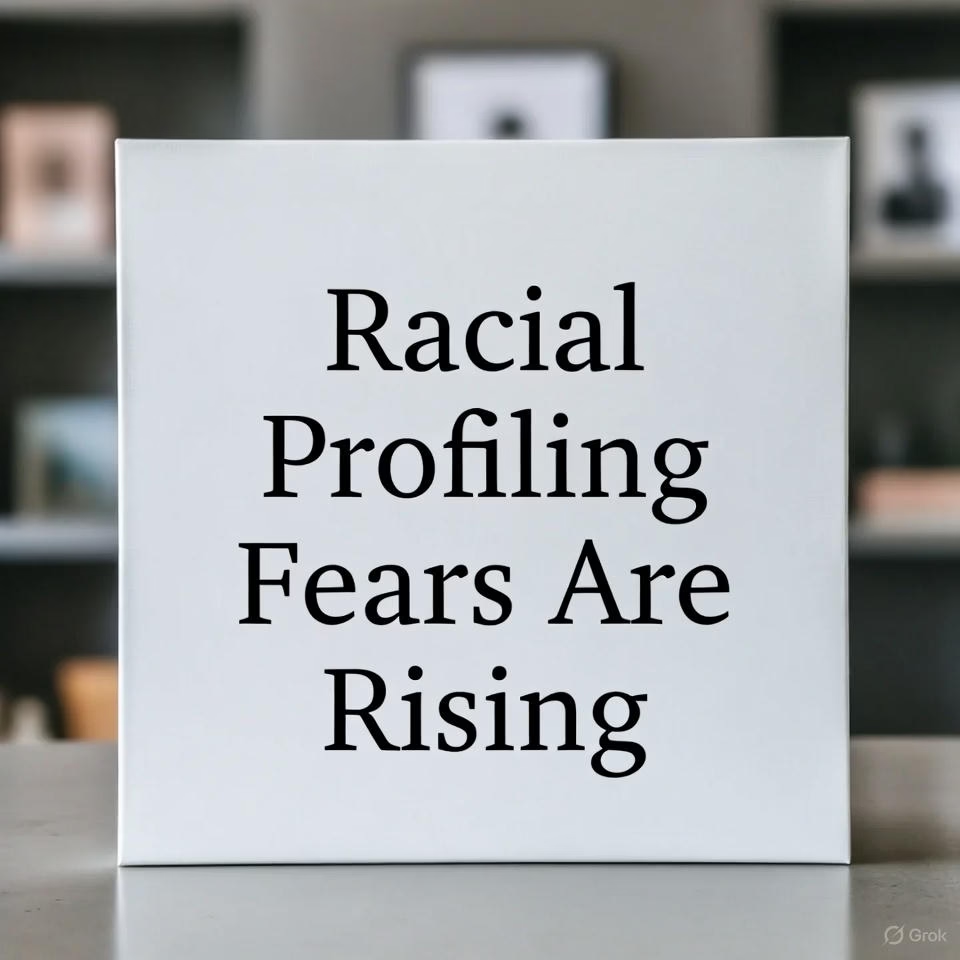The modern client journey whether an individual seeking redress or corporate counsel vetting a litigation partner is rarely linear. They don’t simply click the first search result; they research, compare credentials, check reputation, and seek validation across multiple digital touchpoints. For law firms in 2025, relying on a single marketing channel is not just inefficient, it’s actively detrimental to growth. The future belongs to firms that build a unified, multichannel marketing strategy that establishes authority, builds trust, and drives high-quality caseloads.
The Multichannel Imperative: Why Integration Wins
A multichannel approach ensures that your brand’s message is consistent, pervasive, and delivered at the exact moment a prospect is ready to engage. This strategy solves two fundamental problems faced by single-channel firms:
- Audience Fragmentation: Your high-value client may research complex case law via targeted Google search (SEO), vet your partners on LinkedIn (Social), and seek social proof on your website (PPC landing page). If one channel fails, the entire journey breaks down.
- Lead Nurturing: High-stakes legal decisions require long sales cycles. Multichannel synchronization allows you to use one channel (like PPC) for initial awareness, another (Email Marketing) for education, and a third (Social/Video) for conviction, effectively reducing lead fatigue and increasing conversion quality.
Pillar 1: Foundational Authority (SEO and Content)
Search Engine Optimization (SEO) remains the bedrock of legal marketing, but the approach must be strategic, not volume-based. High-value clients are using increasingly sophisticated and niche keywords.
- Beyond Blogging: Authority is built on technical legal content. This includes detailed white papers, deep-dive analyses of recent regulatory changes, and sophisticated resources that prove specialized expertise. A strategic agency ensures this content answers complex client questions and is structurally optimized for Google’s ranking algorithms.
- Local SEO for Foot Traffic: Even large national firms need to master Local SEO. Clients often search for “mass tort lawyer near me” or “corporate counsel firm [City Name].” Optimizing Google Business Profile and local citations ensures your firm dominates regional search, regardless of national reach.
- Technical Excellence: Fast loading speeds, mobile responsiveness, and robust site architecture are non-negotiable. Poor technical SEO undermines every dollar spent on creative content.
Pillar 2: Conversational Trust (Social and Video)
While SEO captures research intent, social media and video build the trust and conviction necessary to move prospects down the funnel.
- Strategic Video Content: Video is the ultimate tool for conveying partner conviction and the firm’s origin story. High-quality, cinematic video content should be deployed across YouTube, LinkedIn, and the firm’s website. It humanizes the legal practice, making partners approachable and expertise verifiable.
- Targeted Social Engagement: For B2B firms, LinkedIn is essential for showcasing thought leadership, firm culture, and partner achievements directly to corporate decision-makers. For consumer-facing practices, targeted social campaigns use compelling, ethical narratives to connect with specific plaintiff groups.
- The Trust Channel: Social media is where clients look for social proof client testimonials, community involvement, and evidence that the firm is an ethical, engaged entity. Consistency here is critical to validate the firm’s brand message.
Pillar 3: Precision and Conversion (PPC and Email)
This final pillar is focused on converting validated interest into qualified leads using measurable, precision tactics.
- PPC for Precision: Pay-Per-Click (PPC) advertising should no longer be a blunt instrument aimed at general keywords. Modern PPC targets highly segmented audiences with hyper-specific ad copy (e.g., targeting professionals in a specific industry with a solution for a recent regulatory change). This reduces click volume but dramatically increases lead quality.
- Email Marketing for Nurturing: Once a lead is captured (e.g., downloaded a white paper via a PPC campaign), email is essential for nurturing. Automated email sequences deliver personalized content, case studies, and partner insights over weeks or months, gently guiding the prospect toward a consultation.
Synchronizing the Strategy
The complexity of orchestrating these channels ensuring that SEO content informs social posts, which in turn feed the PPC landing pages, all while maintaining brand consistency requires specialized oversight.
By partnering with a creative agency, law firms gain a dedicated strategic team capable of managing the technical requirements of SEO, the creative demands of video production, and the analytical rigor of PPC. This synchronized approach ensures that every dollar spent contributes to the firm’s singular goal: to define its difference, establish its authority, and attract the highest-value caseloads. Only through this level of strategic integration can a law firm move beyond the chaos of transactional advertising and emerge as the sophisticated Outlier Creative Agency in its practice area.






